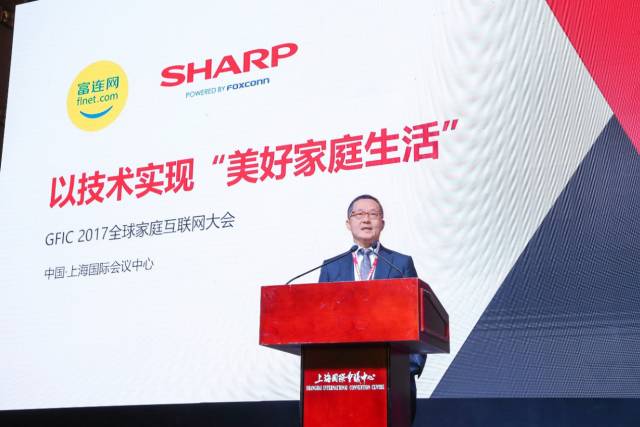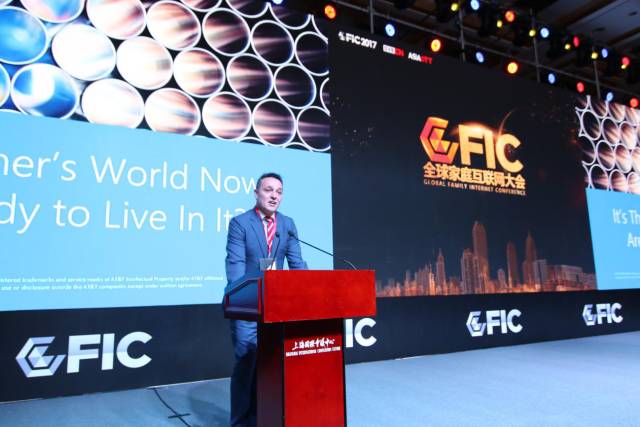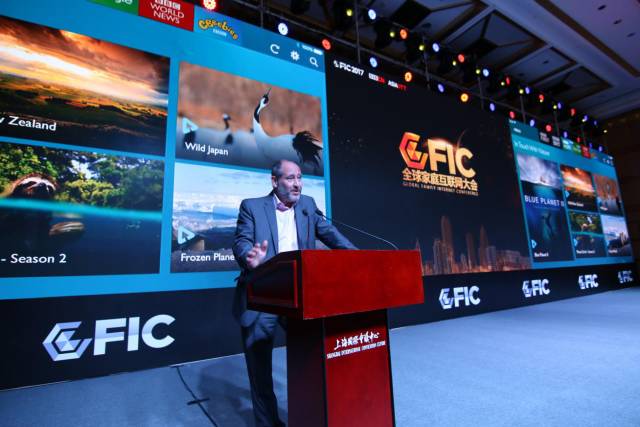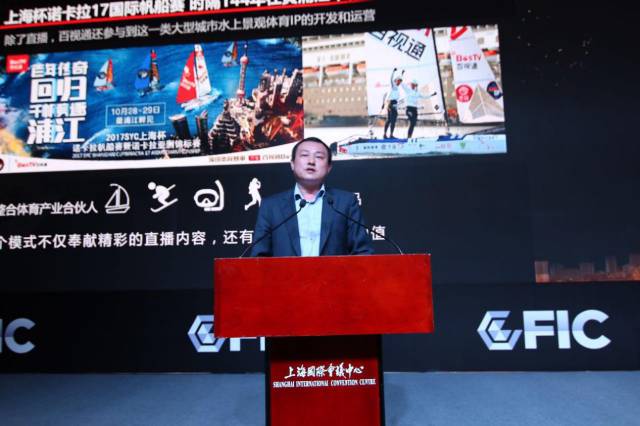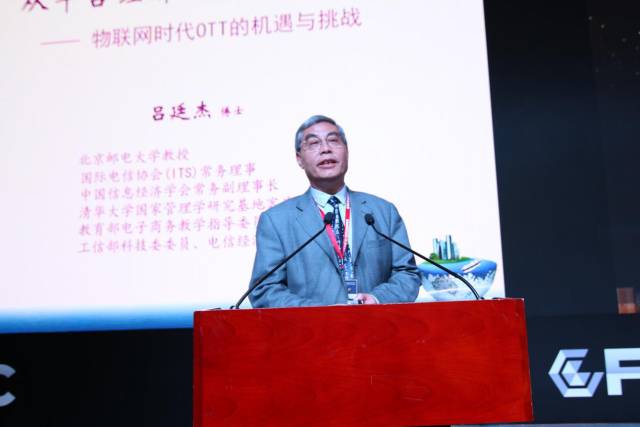The 2017 Global Home Internet Conference (GFIC) hosted by DVBCN & Asia OTT was held on November 14-15 at the Shanghai International Convention Center. The theme of the conference is "Internet + Home" to create the future family science and technology life.
The conference attracted the participation of 108 heavyweight guests, 300 industry leaders, 500+ companies, and 3000+ professional audiences from around the world. It fully meets the development requirements of new technologies such as “Internet of Things†and “Artificial Intelligenceâ€. Data, Internet of Things, artificial intelligence, 5G, CDN, large-screen, operator transformation and other new technologies, new formats, and new markets have started cross-border exchanges to explore the new trends of the market in 2018 and explore future development road maps. At the opening ceremony of GFIC2017, five heavyweight guests from Foxconn, AT&T, BBC, BesTV, Beijing University of Posts and Telecommunications, and China Information Economics Association talked about thinking about future technologies, products, formats, and markets from five perspectives.
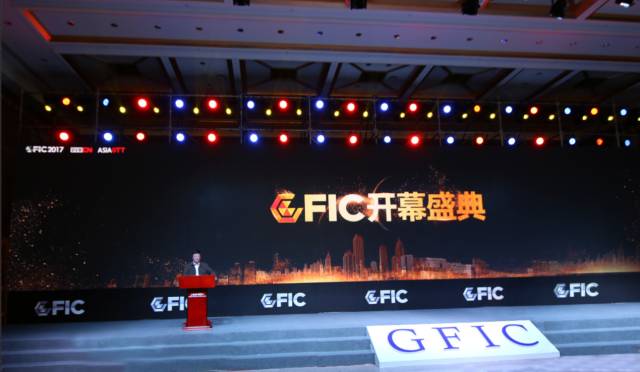
Host of the conference: Director of Value-added Services Professional Committee of China Communications Enterprise Association, Yu Shengduo, Executive Vice President of China Communication Industry Association Virtual Operation Branch
8K+ Artificial Intelligence Internet of Things (AIoT)! Trigger new industry motivation
In GFIC 2017, Yuan Xuezhi, Chief Marketing Officer of Foxconn Technology Group shared Foxconn and Sharp's enjoyment of the future smart home! In Foxconn and Sharp's plans, the real smart home is based on AI+IoT, the Artificial Intelligence Internet of Things (AIoT), that is, it must be wise to think, but also to adapt to people's communication methods. Sharp effectively combines artificial intelligence and the Internet of Things, and uses the interactive behavior of multiple nodes in the Internet of Things to acquire, store, and calculate data, thereby creating an artificial intelligence product with deep learning capabilities.
The Internet of Things, the most influential and new round of scientific and technological revolutions, is sweeping across. In the future, the interconnection of all things is rewriting the history of science and technology. In the living room living area, which accounts for the largest proportion of smart homes, with the continuous development of emerging technologies, returning to the family's big screen life, the wind is rising! Big screen has become an important entrance for the future "living room economy".
Sharp's 8K ecology is closely linked with the rising living room economy. In its 8K ecology, building a home entertainment life is one of the major focuses. In the future, 5G network will become the key network technology platform for the dramatic growth of 8K video applications. This means that people can not only enjoy 8K exquisite videos that exceed 4.3 times of human eyesight on the Internet, but also 8K+5G blessing will allow The future is full of imagination.
In the future “8K+5G†smart ecology built by Foxconn Sharp, through the continuous sinking of technology, at least the future will change the work life, education life, entertainment life, family social life, safe life, healthy life, property purchase transactions Life, environmental protection, automobile life and other eight major areas of life. Sharp is focusing on the overall situation and striving to create a complete industrial chain from content to broadcast, allowing the 8K industry to rapidly establish commercial applications and scales, enter the general consumer market in the shortest time, and create a more intelligent life for ordinary people.
5G video era is coming soon! How to build a new consumer platform
AT&T Executive Director Tash Stamatelos spoke at GFIC 2017 that 5G video consumption will continue to grow rapidly. About 60% of mobile phone users now use video to watch. By 2020, more consumers will choose OTT services. Research, about 23% of broadband users, they only order OTT service and pay for their subscription services and patents.
There have been predictions that Internet media entertainment will overturn traditional forms of entertainment. However, this trend is irresistible. In the future, consumers will have more choices and requirements will be higher. Therefore, new consumer platforms need to be established. Seamless platform connectivity is needed everywhere, to provide customers with an integrated solution, and And provide high-quality services to customers through very high-end distribution.
Tash Stamatelos believes that the new consumer platform will have the following characteristics:
The first is a personalized platform. Personalization means that everyone is watching videos that meet their needs, and meets the unique needs of consumers through data operations and data recommendations.
Followed by the user experience. The user experience is second only to the content of the operation. Consumers can obtain the corresponding content through any device and the advertisement can bring income.
The intelligent transformation of the TV station! Leading a new era
The "nobility" of the broadcast and television industry, the British Broadcasting Corporation (BBC), has been monopolizing British television and radio stations for a long period of time. At present, the audience rating is still over 30% of the population, and the listening rate reaches 56% of the population. With 120 million listeners worldwide, it is one of the largest news broadcasters in the world. The BBC was founded in 1922. After nearly a hundred years of development, the BBC has surpassed expectations. It has changed from a traditional English-style conservative old radio and television institution to the transformation and development of traditional media in the era of financial media, leading the model of "intelligent" broadcasting and television stations.
At GFIC2017, David Weiland, Executive Vice President of BBC Asia, shared the latest 4 product cases:
First: BBC Iplayer. The BBC Iplayer was launched on the Christmas Day in 2007. It was originally used as a playback service. Visitors in the UK can look back 7 days before, including the contents of the BBC, one Taiwan, three Taiwan and four Taiwanese stations. Iplayer has achieved great success at the beginning. Within a year, 20% of the UK network's traffic has contributed to Iplayer.
Second: BBC3 channel. In 2003, the BBC created a channel for young people. In 2016, the BBC decided to close the BBC3 and completely relocated to the Internet. This is the first attempt in the world. After completely moving to the Internet, users have increased threefold.
Third: BBC player. It is a certified provider of linear content that was released this year in Singapore.
Fourth: britbox. This is the channel of cooperation between BBC and ITV. It is customized for US customers and the monthly viewing fee is US$6.99.
Big screen is awakening, living room economy is erupting
In GFIC 2017, the vice president of Oriental Pearl and President of BesTV Shi Zhishao said that regardless of the terminal, network, or content, everyone has a consensus on the development trend of the home Internet. With the expansion of network bandwidth, the computing capacity has been upgraded. The screen is awakening and the living room economy is erupting. Shi Xuan analyzed his thoughts on the "home Internet" from three aspects: technology, products, and operations.
First, the "family" of wisdom. Now, the smart big screen has entered millions of households, and the era of home Internet has also begun. In recent years, with the popularization of smart large screens and high-bandwidth broadband networks such as 20M/50M in Chinese families, young people who are becoming mainstream consumer groups in society have begun to return to television. With the maturity of voice-activated technology, the iterative touch technology, the scene of human-machine dialogue through voice and space gestures will be more and more widely used in the living room scene, the wisdom of the big screen will no longer be just installed in the wall A large object that cannot be moved will become a health assistant, fitness coach, tutor and purchasing steward in a smart home.
Second, there is a "love" product. Unlike personal terminals such as PCs and mobile phones, the screens of televisions are large enough to share happiness with loved ones, children, parents, relatives and friends, and share good times. Moreover, the property of the television is the family. Therefore, building a home-based user service system is the correct posture for opening the home Internet.
Third, value management in the era of “big connectionâ€. First, the operating system is an ecological "community." In the early days of the Internet user era, people looked at their users as lifelines, but quickly found that they were holding these users. The value-added space of a single product line is not large. As a result, everyone began to operate as a superimposed user. The superposition and cross-border of user groups can produce unexpected chemical reactions. Second, we must talk about the "fine" user value grading of the operating system. Simply taking out users is just a universal service, and lucrative user value needs to find and develop the 20% of high-end users in each market segment, and build refined operating strategies.
Blockchain + Internet of Things + Big Connection! Build a new business logic
Prof. Lu Tingjie, a professor at the School of Economics and Management at Beijing University of Posts and Telecommunications and a vice chairman of the China Information Economics Association, proposed at GFIC 2017 that OTT is the real Internet thinking! The family scene in the future is very imaginative.
The home Internet is a very large application scenario. The European Union has also conducted surveys. 70% of mobile services take place indoors. Therefore, the family scene may become the most viscous and most imaginative field.
The arrival of the blockchain era is a very critical thing. It is beneficial to the Internet of Things and to large-scale connections. In the future, all management of the Internet of Things is not an IP address. We must use blockchain technology to manage connection management and identification of ownership. The network of tags can not be tampered with. Blockchains are used on various certificates and will certainly become the underlying technology of the Internet of Things in the future.
The core technology of the Internet has subverted the traditional business logic. The platform economy and OTT have emerged and new business logic is being built. Blockchain will become the underlying foundation of the Internet of Things and restructure all Internet information management platforms.
55 Modular Jack
55 Jack.China 4P4C RJ11 PCB Socket,Side Entry RJ11 Socket manufacturers, welcome RJ11 Jack Connector,2 Ports RJ11 Jack purchasers from worldwide to visit our site.
The RJ-45 interface can be used to connect the RJ-45 connector. It is suitable for the network constructed by twisted pair. This port is the most common port, which is generally provided by Ethernet hub. The number of hubs we usually talk about is the number of RJ-45 ports. The RJ-45 port of the hub can be directly connected to terminal devices such as computers and network printers, and can also be connected with other hub equipment and routers such as switches and hubs.
4P4C RJ11 PCB Socket,Side Entry RJ11 Socket,RJ11 Jack Connector,2 Ports RJ11 Jack
ShenZhen Antenk Electronics Co,Ltd , http://www.coincellholder.com

